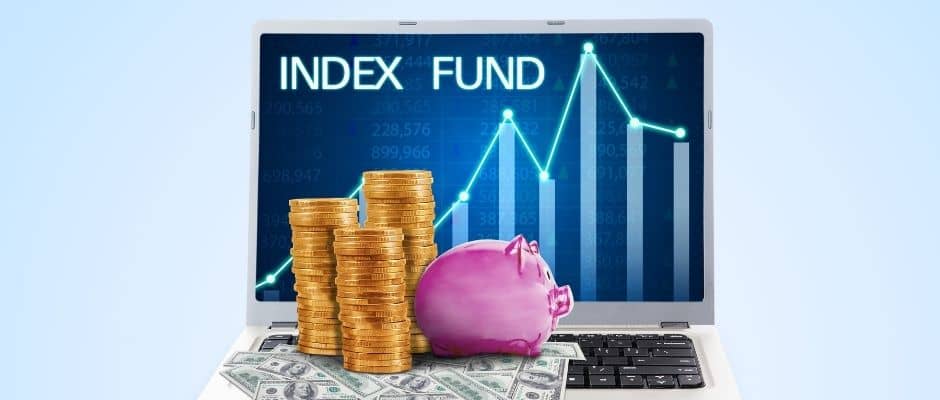Have you ever wondered what the difference is between the ticker symbols SPX vs. SPY? These two ticker symbols are used almost interchangeably which is incorrect. Take a stroll through social media platforms like FinTwit or Reddit and you will see SPX and SPY analysis everywhere. So what is the difference between SPX and SPY? We did the research for you and here is what we found.
The difference between SPX and SPY is the type of investment asset they are. Both track the S&P 500 index but the way you can trade them is very different. SPY is a publicly traded ETF and SPX is a measure of the current value of the S&P 500. These two ticker symbols are widely seen as the reading of the US stock market and the health of the US economy. But under the surface, SPX and SPY are two completely different types of assets that serve different purposes for traders and investors.
In this article, we will begin to unravel the complexities behind both SPX and SPY and how to understand them. We will discuss exactly what each ticker symbol represents and why so many investors get the two assets confused with one another.
What is the S&P 500?
Before we discuss the intricacies of SPY and SPX, let’s start at the beginning. What is the S&P 500 index? In terms of stock indexes, the S&P 500 is the benchmark against which all markets are measured around the world. The S&P 500 is the clear benchmark in the United States for equities and is generally seen as a gauge of US economic health.
The S&P 500 index holds the 500 largest American publicly traded companies in one convenient fund. Throughout its 65-year history, the index has gone through a number of different iterations. These have included a 233-stock weekly index and a 90-stock daily calculated index which was introduced in 1926. It finally became the S&P 500 as we know it today on March 4, 1957, and has existed this way ever since.
When people say beating the market, they are referring to the 9-10% annual average return of the S&P 500. Any asset that can top this figure is said to be a market-beater. It might not seem like a lot, but 9-10% compounded annually just for holding a single asset is a great way to grow your wealth.
Is the S&P 500 an Index Fund?

This is a common question, especially among newer investors. Is the S&P 500 an index fund? The answer is no, the S&P 500 itself is not considered an index fund. Instead, there are dozens of index funds that track the S&P 500 index which makes holding all 500 companies a much easier endeavour. The first known S&P 500 index fund was introduced by Vanguard as a mutual fund in August 1976.
ETFs or Exchange Traded Funds have become the most popular way to invest in the S&P 500 index. Unlike mutual funds, ETFs trade directly on the major stock exchanges and hold a basket of different assets.
Low-cost index funds that track the major indexes are some of the best ways to invest for passive investors. Warren Buffett himself has said on multiple occasions that owning these low-cost index funds is the best way for most people to invest. You are probably wondering what all of this has to do with the SPY vs SPX conversation. Well, S&P 500 index fund ETFs are a nice segue to our next section about the most popular stock symbol in the world: SPY.
What is SPY?
If you have ever spent time on social media with traders you will have undoubtedly seen the sticker symbol SPY. It is perhaps the most analyzed asset on the market and is constantly being charted by amateur and professional traders alike. But what is SPY and what does this symbol refer to?
SPY or $SPY is the symbol for the SPDR S&P 500 Trust ETF which trades on the NYSEARCA exchange. According to State Street, it is the largest ETF in the world by assets under management with more than $547 billion. This fund was first established in January 1993 and since then, it has provided shareholders with an annual average return of about 9.7%.
As we mentioned, the SPY ETF directly tracks the S&P 500 index and holds all 503 positions in similarly weighted allocations. It is important to know that SPY will never have the exact same performance as the S&P 500 as there are fees that minimally impact your long-term gains. Holding all of these stocks in one asset is the best way for investors to have exposure to the largest companies in the world’s strongest economy.

SPY ETF Portfolio Holdings (July 2024)
Here are the top ten stock holdings in SPY as of July 2024:
| Stock Name | Stock Symbol | Weighted Allocation in SPY |
| Microsoft Corp | NASDAQ: MSFT | 7.25% |
| NVIDIA Corp | NASDAQ: NVDA | 6.63% |
| Apple Inc | NASDAQ: AAPL | 6.62% |
| Amazon.com Inc | NASDAQ: AMZN | 3.86% |
| Meta Platforms Inc Class A | NASDAQ: META | 2.41% |
| Alphabet Inc Class A | NASDAQ: GOOGL | 2.33% |
| Alphabet Inc Class C | NASDAQ: GOOG | 1.96% |
| Berkshire Hathaway Class B | NYSE: BRK.B | 1.61% |
| Eli Lilly & Co | NYSE: LLY | 1.57% |
| Broadcom Inc | NASDAQ: AVGO | 1.53% |
This is the sector breakdown for SPY as of July 2024:
| Sector Name | Weighted Allocation in SPY |
| Information Technology | 32.44% |
| Financials | 12.42% |
| Health Care | 11.73% |
| Consumer Discretionary | 10.34% |
| Communications Services | 9.96% |
| Industrials | 8.13% |
| Consumer Staples | 5.77% |
| Energy | 3.65% |
| Utilities | 2.25% |
| Materials | 2.16% |
| Real Estate | 2.15% |
| Total | 100% |
As with other ETFs, SPY can be owned for the long term or traded multiple times within the same day. You can even trade options against SPY as it has expiration dates on a daily basis. This has led to the popularity of trading 0DTE or 0 Days to Expiry options. This is more like gambling on the S&P 500 than truly investing in it.
As of July 2024, the newest members of the S&P 500 are Crowdstrike (NASDAQ: CRWD), Go Daddy (NYSE: GDDY), and KKR & Co (NYSE: KKR). The S&P 500 index re-balances every quarter and can add or remove constituents four times each year.
What is SPX?
The natural inclination is to assume that SPX is another ETF that tracks the S&P 500. The SPX is the numerical measure of the S&P 500 that is calculated in basis points rather than the price of a share. If the S&P 500 index gained or lost 2.0%, we measure it as a percentage or in a value of basis points. This is the reason why SPX is commonly referred to at levels like 5100 or 5400, rather than $535 like SPY.
If the trading level of SPX is 5100 it does not mean a share of SPX costs $5,100. Since SPX is not a stock or ETF, you cannot buy shares of SPX at all. You cannot hold it as a long-term asset in your portfolio either. So how can you trade SPX? The only way to trade SPX is through options or futures contracts.
How to Trade SPX Options

Trading options against the SPX has become a popular way of day trading. SPX options are different from stock options because they are cash-settled and not settled in shares of the stock. Any gains or losses are paid out in cash at the settlement of the options contract. This means that gains are added to your account and any losses are removed from your account.
SPX options are European-style options so they cannot be exercised before the settlement date. They also must be held until the expiration date. This is different from American-style options which can be exercised at any time before the date of expiration. Before you get involved in trading SPX options, you need to make sure you have conviction in your trade because once you enter a trade, you are locked into it.
Many traders will tell you that the SPX is the purest way to trade the S&P 500. It is just trading the chart and the price action of the index which requires strong technical analysis and understanding of the markets.
What is a Better Investment: SPY vs. SPX?
Although both SPY and SPX track the S&P 500, it is clear that they are very different assets. For starters, SPY is an ETF that can be bought and held in your portfolio. You can also trade the SPY ETF on a daily basis with options or buying shares. This State Street fund has provided a 9.7% average annual return and even pays out a quarterly dividend yield. SPY is an ETF that makes it easy to invest in the 500 largest publicly traded companies in the US.
On the other side of the coin, SPX is purely for traders as it cannot be a position in any portfolio. The only way to gain exposure to SPX is through futures or options trading. This definitely makes trading SPX a more advanced strategy.
SPY and SPX are both great ways to invest in the S&P 500 index. There is no right choice as they both function as different trading assets. For long-term investors who want to passively invest in the stock market, SPY is a better choice. You can own all 500 stocks without even lifting a finger. For day traders, the SPX is a more enticing asset to trade, especially if you can develop a good feel for how the markets behave.
As always, this is not financial advice but an explanation of the differences between SPY and SPX. If you think either SPY or SPX fits into your investment strategy, that choice is yours alone to make!
Stay Savvy!
